Those who grew up in the 1980s will remember the A-Team and how much they loved their Stainless Mini-14 Factory Folder. That rifle became the symbol for that television series and the apple of many an eye.
In 1972, a crack commando unit was sent to prison by a military court for a crime they didn’t commit. These men promptly escaped from a maximum-security stockade to the Los Angeles underground. Today, still wanted by the government, they survive as soldiers of fortune. If you have a problem, if no one else can help, and if you can find them….maybe you can hire The A-Team.
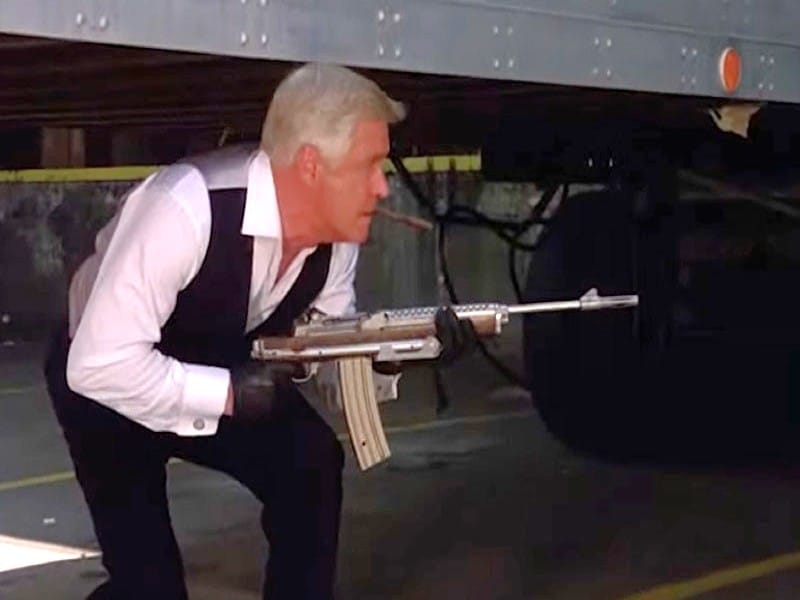
History of the Mini-14
In 1974, Ruger began producing the Mini-14, a scaled-down, .223 version of the military’s M-14. Although the bolt system is very similar to the M-14, the gas system is much different. Outside, they look similar, but inside, the rifles are quite different.
Bill Ruger introduced the Mini-14 to be a working man’s rifle, with modest cost (originally, less than $200) and decent performance. The classic wood stock and conventional resemblance to the much-loved M-14 (known for reliability) gave it a strong following.
Its appearance differed from the AR-15 because it did not use black plastics. That less-threatening appearance led it to be adopted by police agencies, correctional departments, and people who generally wanted a short rifle with respectable firepower, but that didn’t alarm everyone who saw it.
Ruger equipped many of their Mini-14 GB (Government Barrel) rifles, as well as their AC-556 (Fully Automatic rifles for law enforcement) with the ubiquitous side-folding stock that the A-Team made so famous. The above rifles also featured flash suppressors with bayonet lugs.

In 1986, during the infamous “FBI Shootout,” Michael Platt used a Ruger Mini-14 to shoot seven FBI agents, killing two. The incident highlighted how effective a carbine could be during an encounter and began a trend of departments arming law enforcement personnel with carbines in their vehicles.
Ruger used to equip their Mini-14s with side-folding factory stocks and a polymer pistol grip. With the stock folded, the little Mini-14 became extremely compact, making it convenient to store. With the stock unfolded, the little carbine just became damn cool! Sadly, it seems that Ruger had discontinued the factory folder for sale.
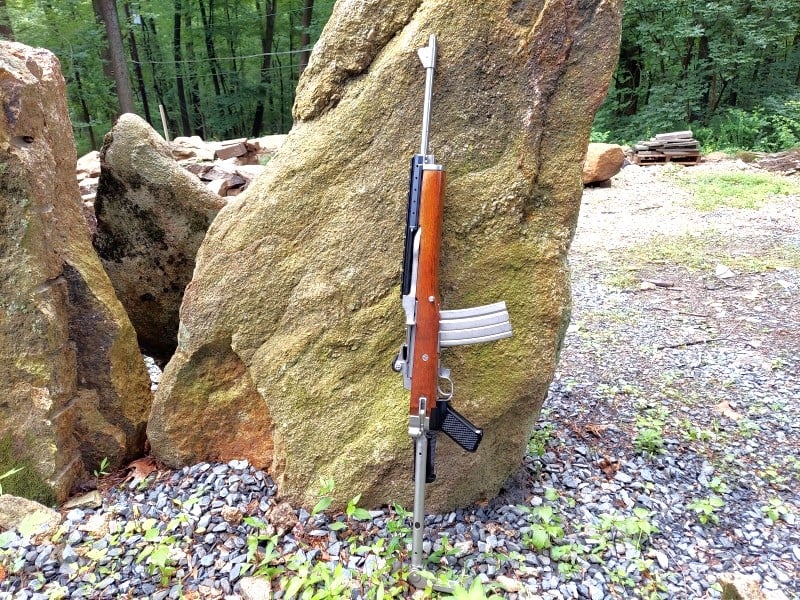
The approximate overall length of a Mini-14 with the stock extended (I.e., unfolded) is about 38 inches. When it’s folded, the length is approximately ten inches shorter. The length of pull for the folding stock is listed at 13.5 inches (incidentally, the factory wood stock’s length of pull is also 13.5 inches, so the folder mimics it perfectly).
Back then, the Mini-14 was chambered for .223, but I see that they now chamber it for 5.56mm, which will accept both that caliber and the .223 (the pressure of the 5.56mm is more than the .223). The standard Mini-14 barrel is 18.5 inches.
Ruger introduced the Ranch Rifle in 1982, which included mounting points for scopes in an effort to get more accuracy out of the platform. Later on, in 1987, the Mini-Thirty was released. It uses the 7.62x39mm round that the AK-47 and SKS use, which has historically been less expensive than many other rifle rounds. An added bonus was that it could be used for hunting in many states because it is a .30 caliber rifle.
These days, the Mini-14 folder is available in the wood stock versions, composite stocks, and laminated stocks for variety.
Magazines
One of the downsides is that the most reliable magazines for the Mini-14 are the OEM (Original Equipment Manufacturer, or “Factory” magazines). Ruger historically has mostly offered those to law enforcement, and they are very pricey. There are aftermarket mags, which work with varying degrees of reliability.

Similar to how the M-14/M-1A is loaded, the Mini-14 magazine must be rocked into the magazine well to be loaded. Under pressure, this is not necessarily the optimal system of inserting a magazine into a rifle, as it takes some dexterity.
Mini-14 Factory Folder Sights
The standard sights on the Mini-14 series are aperture type and are not bad. Not as adjustable as on the standard M-14/M-1A, but not bad. A rear aperture sports a relatively small hole, while the front sight is a ramp.
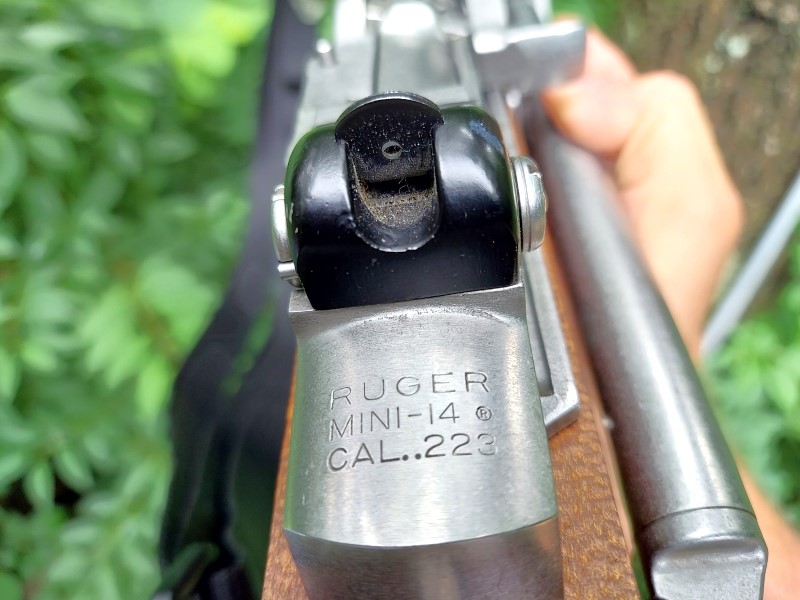
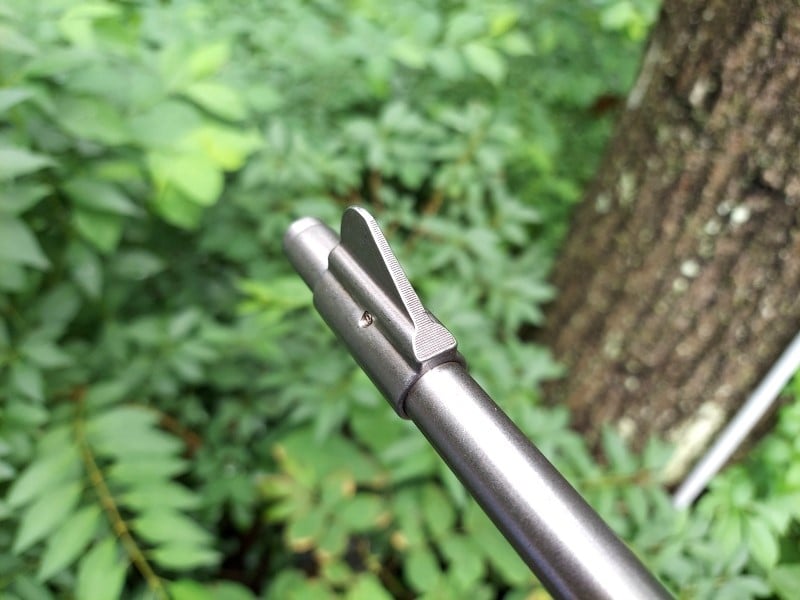
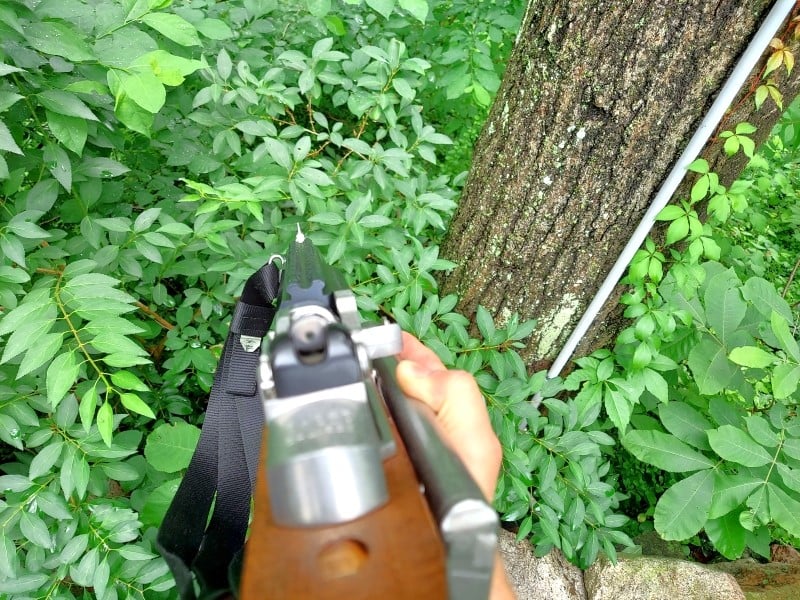
How does the Mini-14 Factory Folder perform?
The folding stocked Mini-14 folder rifle I reviewed belonged to a friend who was kind enough to let me play with it for the afternoon. He damn well should have let me play with it, considering I owned the same rifle previously, and in a fit of stupidity, I sold it to him over 20 years ago. My efforts have been in vain despite my many hours of begging, pleading, bribing, haranguing, and badgering him to sell it back to me. Dear reader, please don’t think my failure was due to a lack of effort because had I invested a similar amount of time digging a hole into the earth, I’d have reached China. And please, don’t be under the impression that I will give up trying to get this gem back because my efforts shall never cease.

We ran it through some basic drills, which did not include bench rest accuracy testing. I recall that this rifle would shoot about 3-4 inches at 100 yards. Now, there are scores of people who will tell us that this is unacceptable accuracy and that the rifle would be useless in combat or self-defense because of its “abysmal” accuracy, or lack thereof. And granted, it is far from a tack driver. However, I believe it is adequate for self-defense. Have you ever returned an attacker’s fire at 100 yards while dealing with adrenaline and incoming rounds? Let’s see if you can shoot up to this rifle’s accuracy potential. I’m betting a good number of people could not.
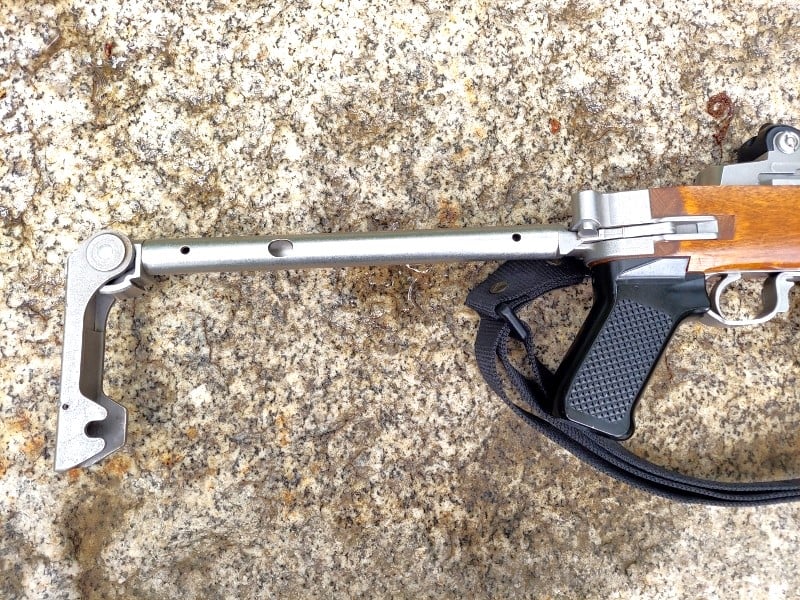
So we did some close to moderate range drills, in which the little rifle proved its brilliance in fast handling and light weight. I neglected to shoot it from the hip with the stock folded up like Colonel Hannibal Smith used to do on the A-Team (I’m not that cool). Suffice to say that the rifle handled beautifully.

It also handled great around buildings and indoors. The recoil was extremely light, obviously, given the small round involved. Speaking of that, I’ve always loved firing the M-1 Garand/Carbine/M-1A family of weapons because of their rotating bolt. You can hear it clanging as it works, which is, to me, one of the neatest sounds in the firearms world. It just has a classic feel and sound all its own. Reliability was also perfect. And, of course, the cool factor is undeniable.
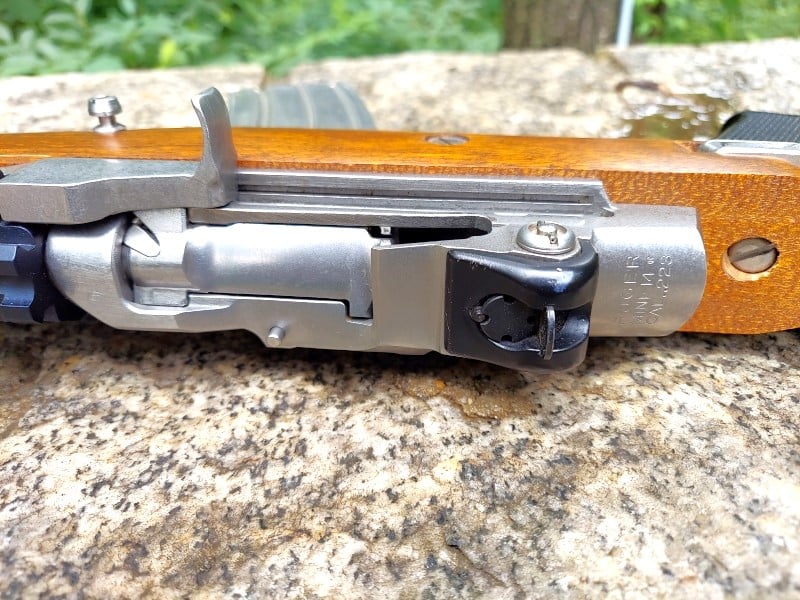
What more can I say, it’s a very cool rifle. Both aesthetically pleasing and effective, these are desirable firearms. I’m aware of a few companies making aftermarket folding stock kits that mimic the originals that Ruger once made. If I had a Mini-14 currently, I’d strongly consider grabbing one up. I believe if Ruger would reintroduce this rifle/folding stock combo, they’d sell like hotcakes.


